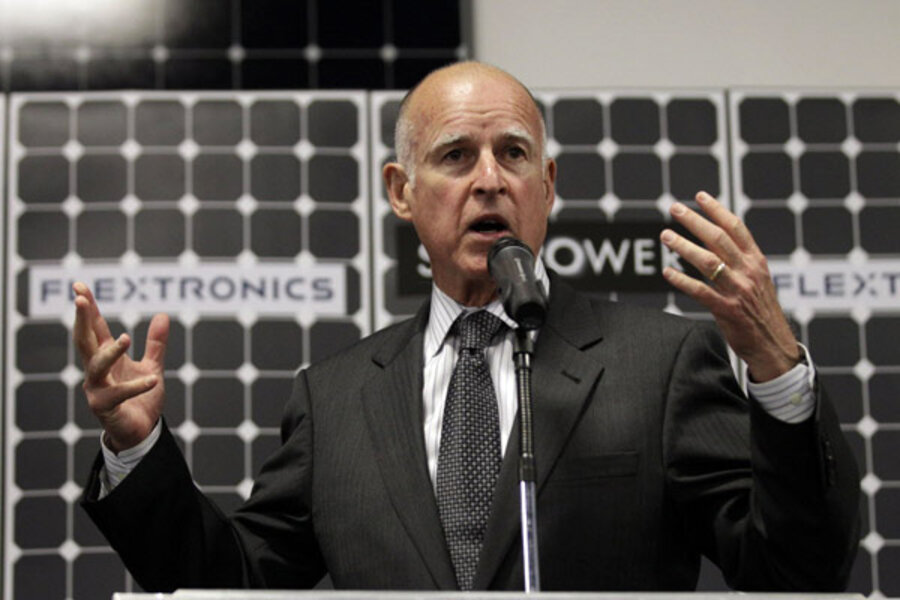Renewable energy: Will new law help or hurt California economy?
Loading...
| Los Angeles
Will California’s new energy legislation help or hurt the state’s economy?
On Tuesday, Gov. Jerry Brown (D) signed legislation requiring California utilities to obtain 33 percent of their electricity from renewable energy sources by 2020. The current requirement is 20 percent.
Governor Brown, not surprisingly, is optimistic about the economic impact. "This bill will bring many important benefits to California, including stimulating investment in green technologies in the state, creating tens of thousands of new jobs, improving local air quality, promoting energy independence, and reducing greenhouse-gas emissions," he said in signing the bill, known as SB 2X.
Environmental groups are also applauding the move, although manufacturing groups say the green jobs created will not offset those lost because of increases in electricity costs.
“With one action ... the state can give clean energy investors the green light they need to infuse new life into the state's clean tech economy,” said Jim Metropulos, senior advocate of Sierra Club California, in a statement. His organization has long called on state lawmakers to pass a requirement of at least 33 percent.
But Gino DiCaro, spokesman for the California Manufacturers and Technology Association, sees it differently. The state, he says, has lost a third of its manufacturing jobs – 630,000 – since January 2001, and this new legislation will drive away more jobs than it will create.
California businesses, Mr. DiCaro says, already pay 50 percent more for electricity on average than businesses in the rest of the United States. For manufacturers in particular, electricity expenses make up a substantial portion of their operating budget. As a result, plants are moving or are being created outside the state.
The new law will probably increase electricity costs by anywhere from 7 percent to 30 percent, according to study estimates.
"Green-job policies are counterproductive if California becomes economically inefficient – creating green jobs but raising costs or reducing output," DiCaro says.
While California has averaged the building of four new manufacturing facilities per 1 million people, the national average is 40 per 1 million people, he says. And the manufacturing jobs in question are typically jobs that pay well – averaging about $69,000 annually.
Moreover, investment dollars in new manufacturing average $1,335 per person nationally, he says, compared with $235 per person in California.
“We need to make sure we do everything we can to compete. Right now, that is already very difficult. This will make it harder,” says DiCaro.
Yet two ratepayer advocacy organizations have supported the bill, points out Peter Miller, a San Francisco-based senior scientist for the Natural Resources Defense Council. Also, the reason California’s electricity costs are so high, he says, is precisely because the state has not had a diverse resource base – which moving into a green economy will mitigate.
“It’s not fair to blame renewables for most cost increases, when other factors are really responsible for the cost increases we’ve seen in the past,” Mr. Miller says.
National observers say the new law is important in the broader context of global warming and air pollution.
“This is a very big deal for the world in setting standards in the face of change,” says Pritpal Singh, professor at Villanova University’s College of Engineering in Pennsylvania. “It is certainly going to have an accelerating influence on the shifting by other states and nations to more green technology.”
That, in turn, could fuel the growth of the green industry in California, some say.
“Increasing the adoption of renewable energy will drive the technology as well as more research and development, which will increase the potential that the economics are there to make it feasible.” says Dr. Nabil Nasr, director of the Center for Integrated Manufacturing Studies at Rochester Institute of Technology in New York. But he cautions, “The transition in the near future may not be economical and will come at a cost.”





